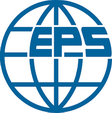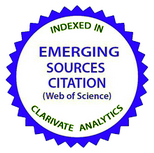Interaction of electrolyte molecules with the surface of porous carbon: NMR study
DOI:
https://doi.org/10.15330/pcss.25.1.212-216Keywords:
porous carbon, NMR, chemical shift, electrolyteAbstract
Electrochemical double-layer capacitors use porous carbons as the electrode material, and improving their performance requires an understanding of the electrolyte−carbon surface interactions. 13C, 14N, and 11B NMR spectroscopy were used to investigate the behaviour of the electrolytes [C(OCH3)3NH3]+Cl- and [N(CH2CH3)]+BF4- on the surface of porous carbon in D2O solutions. A chemical shift of 13C has been found in the fragments N–C, indicating electron density redistribution between nitrogen atoms and alkyl fragments. The presence of a signal with a chemical shift of d = 7.7 confirms the structuring of the electrolytic layer of water solution [N(CH2CH3)]+BF4-.
References
B.E. Conway, Electrochemical behavior at porous electrodes; applications to capacitors. in Electrochemical Supercapacitors: Scientific Fundamentals and Technological Applications, 377 (1999); https://doi.org/10.1007/978-1-4757-3058-6_14.
B.I. Rachiy, I.M. Budzulyak, V.M. Vashchynsky, N.Y. Ivanichok, M.O. Nykoliuk, Electrochemical properties of nanoporous carbon material in aqueous electrolytes, Nanoscale Research Letters, 11, 1 (2016); https://doi.org/10.1186/s11671-016-1241-z.
V. Boychuk, V. Kotsyubynsky, A. Kachmar, S. Budzulyak, I. Budzulyak, B. Rachiy, L. Yablon, Effect of Synthesis Conditions on Pseudocapacitance Properties of Nitrogen-Doped Porous Carbon Materials, Journal of Nano Research, 59, 112 (2019); https://doi.org/10.4028/www.scientific.net/JNanoR.59.112.
L.O. Shyyko, V.O. Kotsyubynsky, I.M. Budzulyak, P. Sagan, MoS2/C multilayer nanospheres as an electrode base for lithium power sources, Nanoscale research letters, 11, 1 (2016); https://doi.org/10.1186/s11671-016-1451-4.
L. Borchardt, M. Oschatz, S. Paasch, S. Kaskel, E. Brunner, Interaction of electrolyte molecules with carbon materials of well-defined porosity: characterization by solid-state NMR spectroscopy, Physical Chemistry Chemical Physics, 15(36), 15177 (2013); https://doi.org/10.1039/C3CP52283K.
Z. Lin, P.L. Taberna, P. Simon, Advanced analytical techniques to characterize materials for electrochemical capacitors. Current Opinion in Electrochemistry, 9, 18 (2018); https://doi.org/10.1016/j.coelec.2018.03.004.
H. Wang, A.C. Forse, J.M. Griffin, N.M. Trease, L. Trognko, P.L. Taberna, C.P. Grey, In situ NMR spectroscopy of supercapacitors: insight into the charge storage mechanism. Journal of the American Chemical Society, 135(50), 18968 (2013); https://doi.org/10.1021/ja410287s.
F. Blanc, M. Leskes, C. P. Grey, In situ solid-state NMR spectroscopy of electrochemical cells: batteries, supercapacitors, and fuel cells, .Accounts of chemical research, 46(9), 1952 (2013); https://doi.org/10.1021/ar400022u.
V. Kotsyubynsky, B. Rachiy, V. Boychuk, I. Budzulyak, L. Turovska, M. Hodlevska, Correlation between structural properties and electrical conductivity of porous carbon derived from hemp bast fiber, Fullerenes, Nanotubes and Carbon Nanostructures, 30(8), 873 (2022); https://doi.org/10.1080/1536383X.2022.2033729.
Downloads
Published
How to Cite
Issue
Section
License
Copyright (c) 2024 I.M. Budzuliak, L.S. Yablon, V.O. Kotsyubynsky, B.I. Rachii, I.I. Budzuliak, V.M. Boychuk, R.V. Ilnytskyi, R.I. Kryvulych

This work is licensed under a Creative Commons Attribution 3.0 Unported License.









